by Mary Harrsch
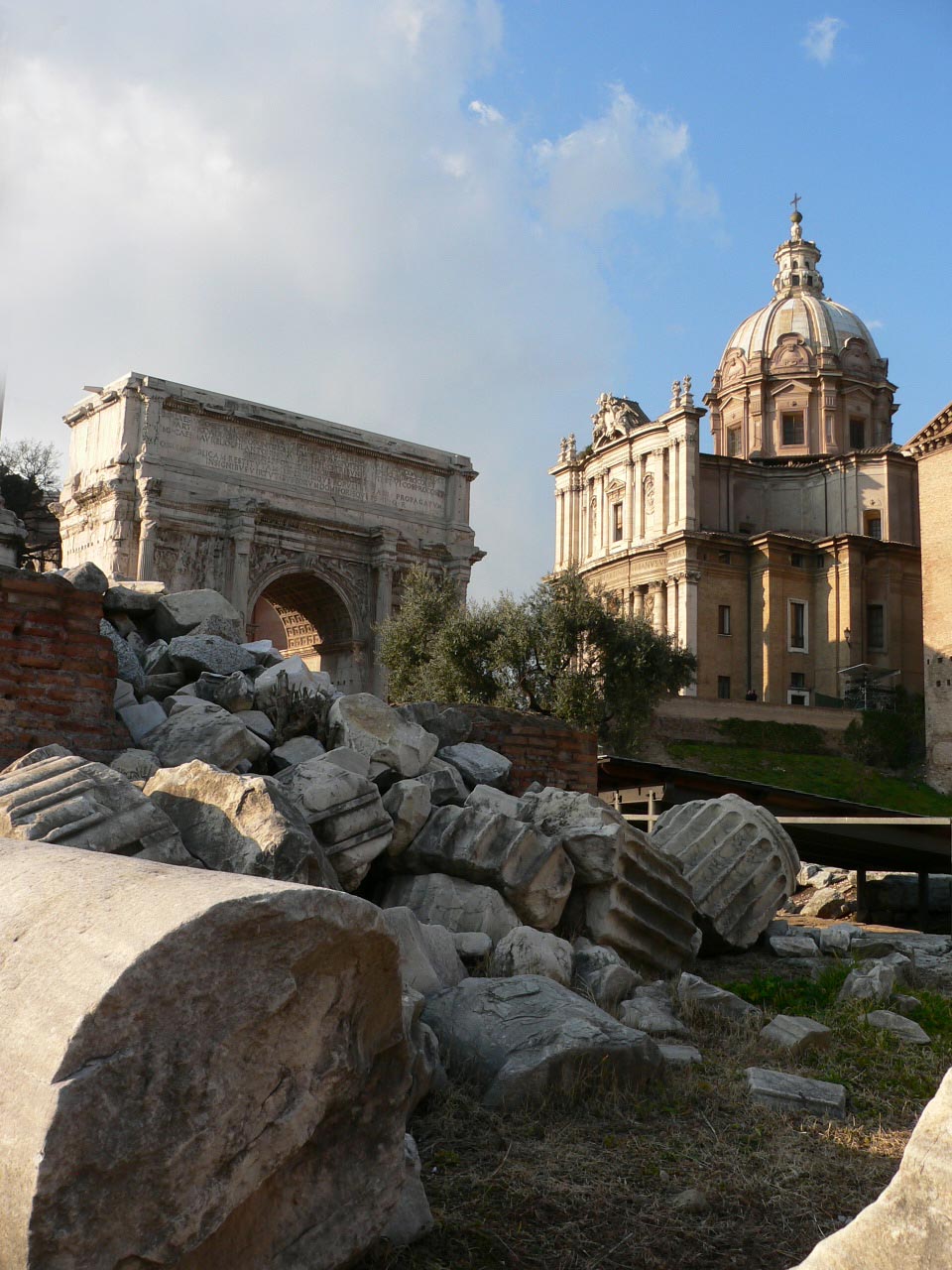
Mary Harrsch has a love for Classics going back several decades, which she juxtaposes with her work as a professional photographer and media wizard. The images in this photo essay span at least a decade, but Mary’s presence, alongside her sharp eyes and keen eye provide many archaeologists and historians with high quality images for books and articles. Electrum Magazine asked Mary if she would select five of her favorite images to share and she graciously assented, sending us five beautiful photos that demonstrate her imagination and ability at rendering visual narrative or ekphrasis.
In the first photo above in the Roman Forum, the clearly-defned progression (conflating Classical ruins, the victory arch of Septimius Severus and the Christian church of St. Luke and St. Martina) is an apt one, especially when the Baroque Era deliberately played up the artistic traditions’ similarities – including its own debt to Roman architecture – while denying the original spirit thereof. The Church often suggested that such continuity as seen here was a given: the best of the Classical world was often considered merely part of Christian thought as a logical foreshadowing; old paganism would bow the knee before Christ and even Plato was seen as somewhat derivative, illogically even before the fact. Roman Christianity often played up that it had triumphed over Roman paganism.
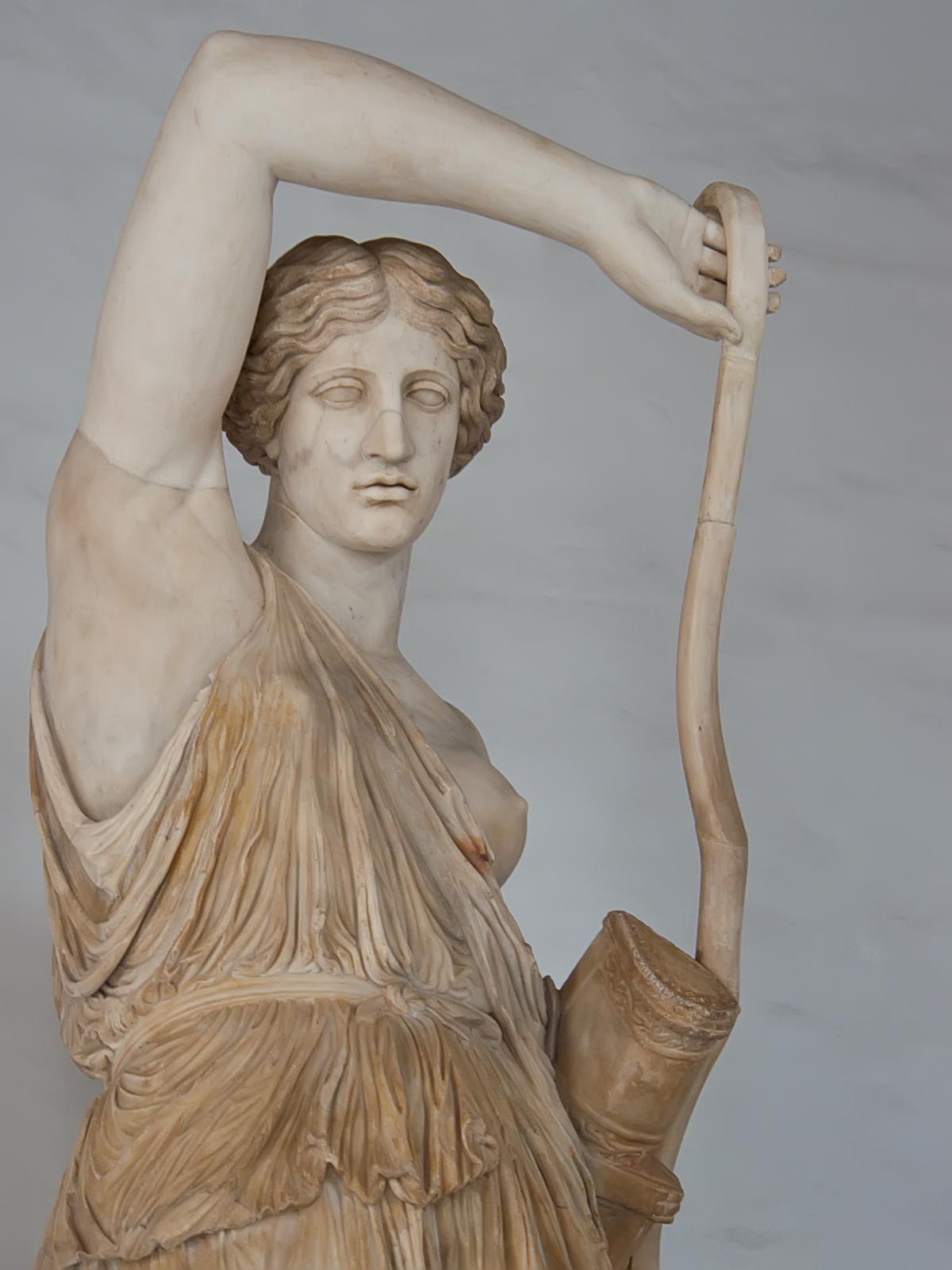
Here an Amazon sculpture from the Capitoline Museum in Rome reflects the influence of Pheidias in a fairly thoughtful representation of being above pathos: a wounded Amazon is still unweakened by making any concession to pain. Amazons, who in myth were said to have burned away much of their right breasts (a-mazon or “breastless”as one Greek etymology has it) and also mostly seen here, especially to be better archers, understood pain to be sometimes cathartic. This sculpture was originally located within the ancient perimeter of Hadrian’s Villa, now part of the Villa d’Este. It was donated to the Capitoline collections by Pope Benedict XIV in 1753 CE.
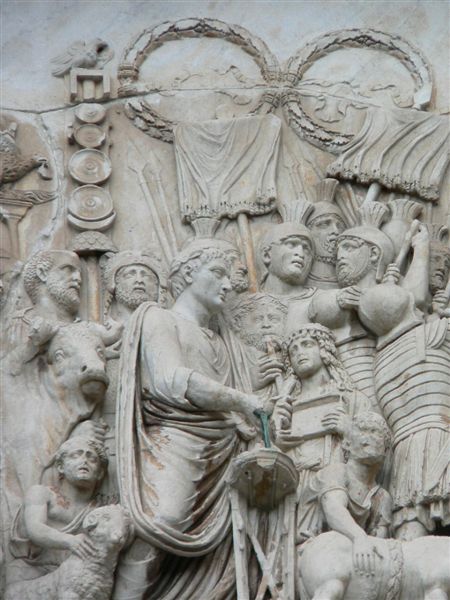
The original context for this frieze detail was from a triumphal arch of Hadrian; the imperial face was altered from Hadrian into Licinius or Constantius I. This may account for the emperor appearing beardless in the center while many of the surrounding soldiers are bearded. In this marble frieze detail, sheep are offered in both Classical and Christian traditions but eventually after Constantine the Agnus Dei (“Lamb of God”) supersedes all other, pagan sacrifice. One stern man holds his bull by the horn, paralleled by a young boy holding his ram by the neck, with the youth looking far more distressed than the ram.
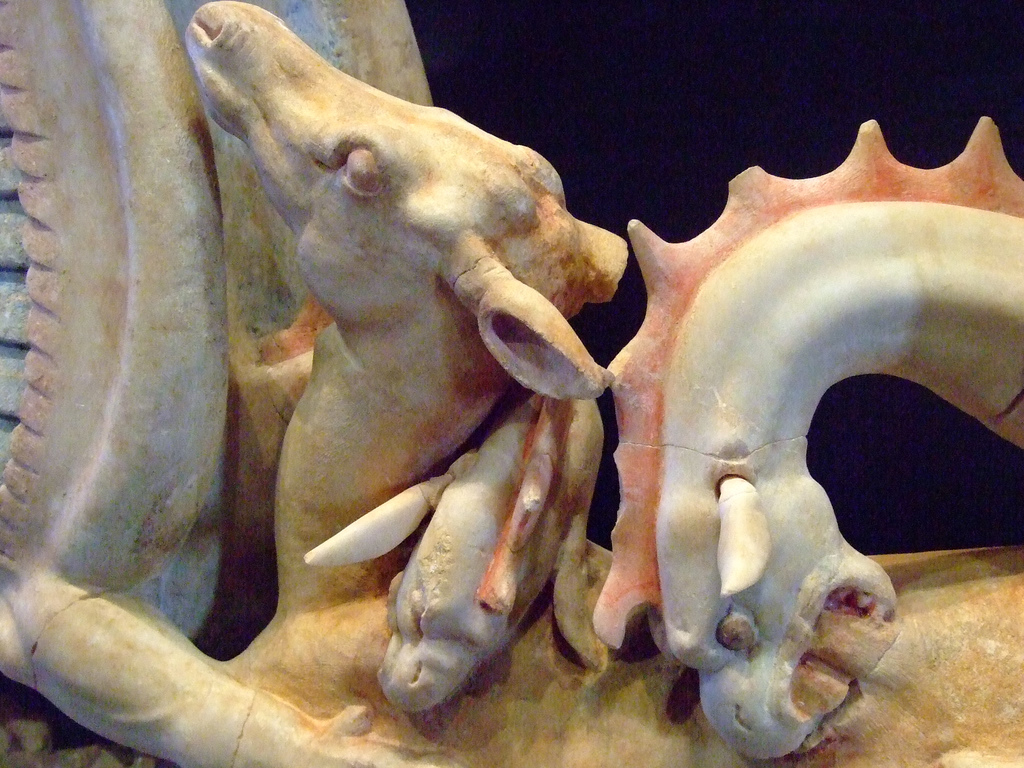
Originally at the Getty Villa in Malibu but now repatriated back to Italy, this graphic sculpture – with relict pigment still showing in places – shows the griffin heads ripping at the back of the doe in Hellenistic realism, when the forces of nature are no less savage than any human behavior unmitigated by virtue. This is somehow a pre-Darwinian acknowledgment that both animals and humans survive at the expense of other life forms. The Italians produced evidence to show that the beautiful piece carved of Parian marble was part of a funerary collection in the vaults of a museum at Foggio in southeastern Italy based on photographs seized in a 1995 raid and its style and polychromatic trace evidence.
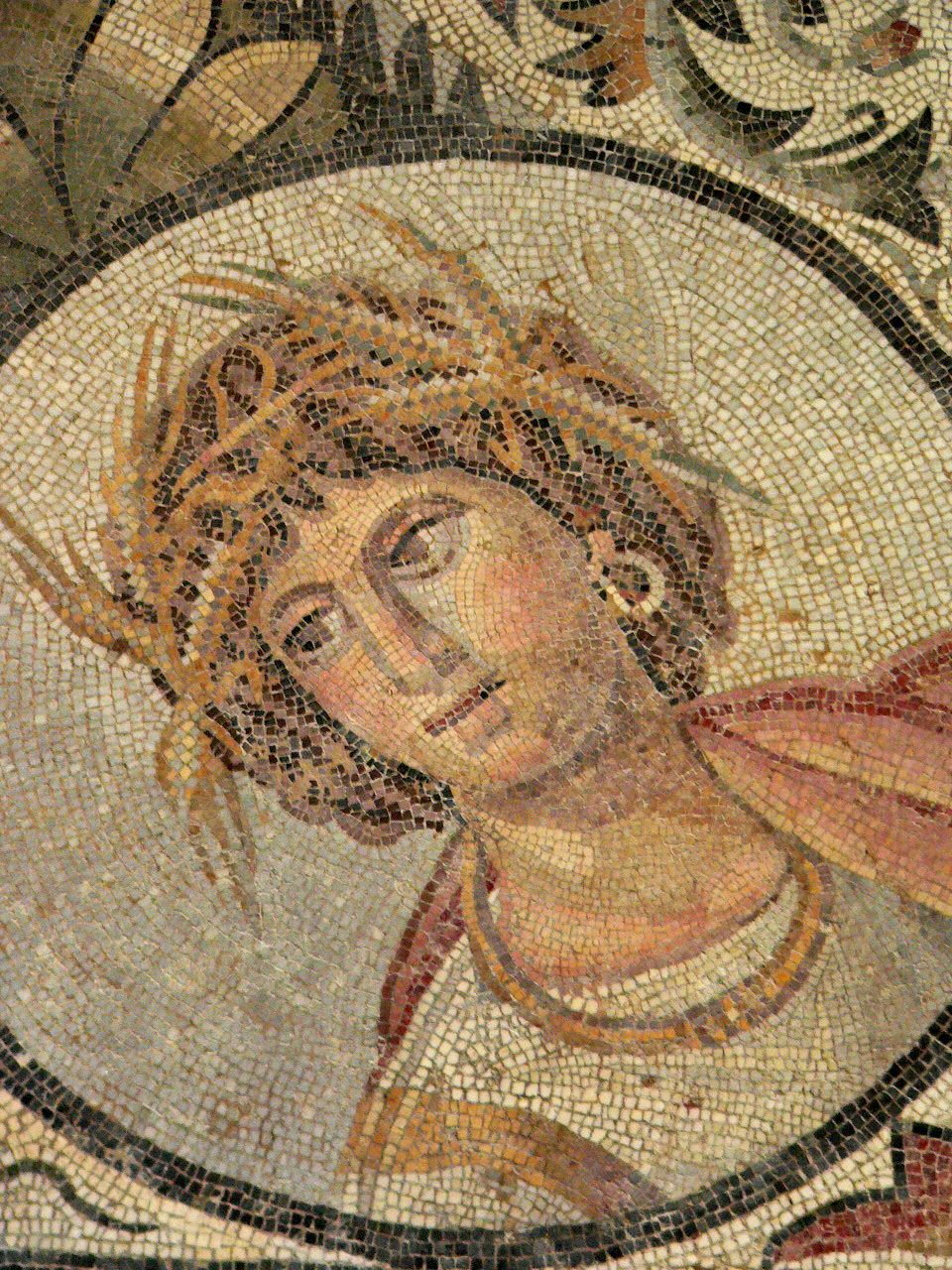
Roman Mosaics – originally works dedicated to the “Muses” in Greek antecedents – often show portrait details of faces not disguised by generic features, although here the Roman Carthage mosaic tondo also has subtle shading enhanced by curved lines that accentuate more realistic approaches by the artists.
Mary Harrsch’s brilliant photos bring out the best of these ancient works, in great light and even greater detail.